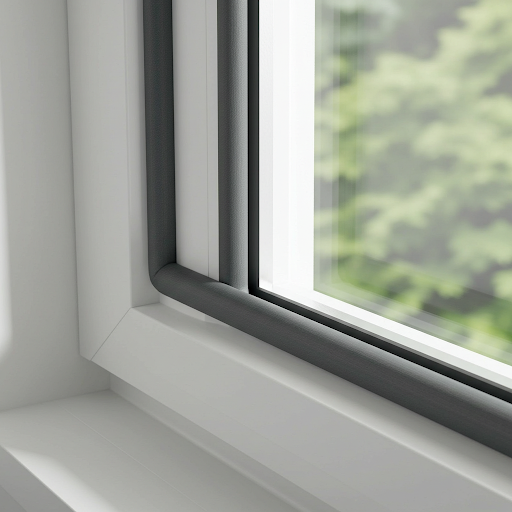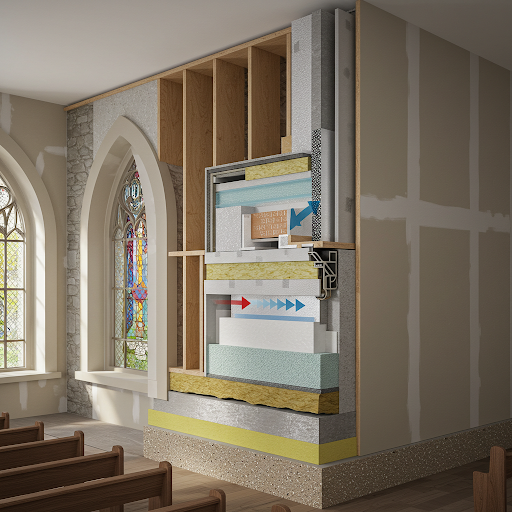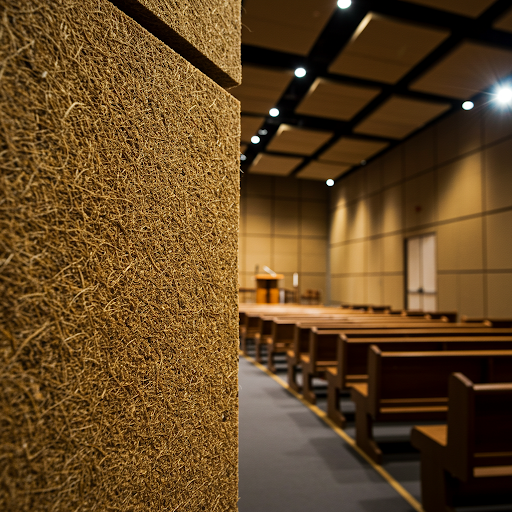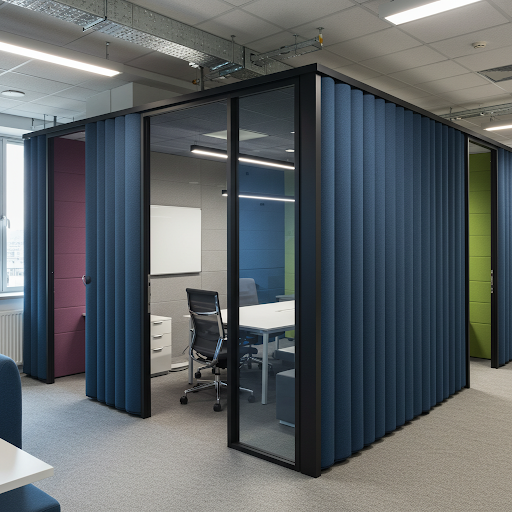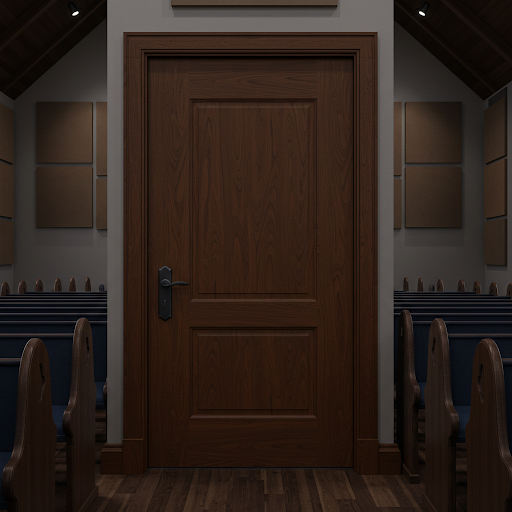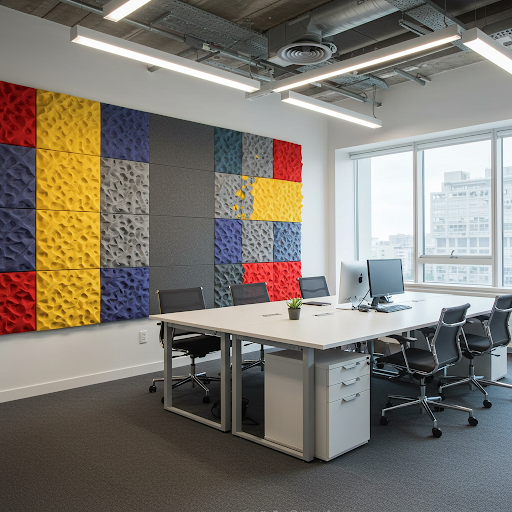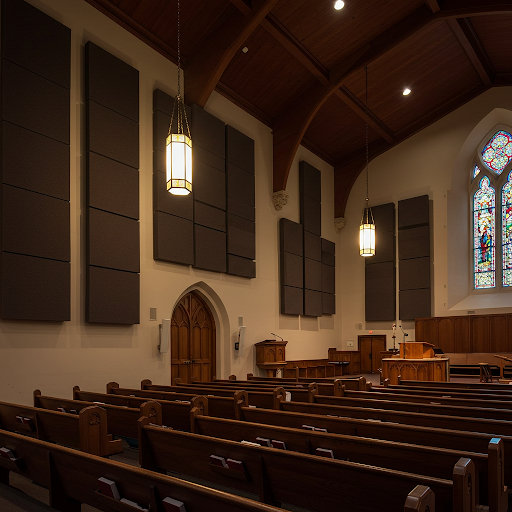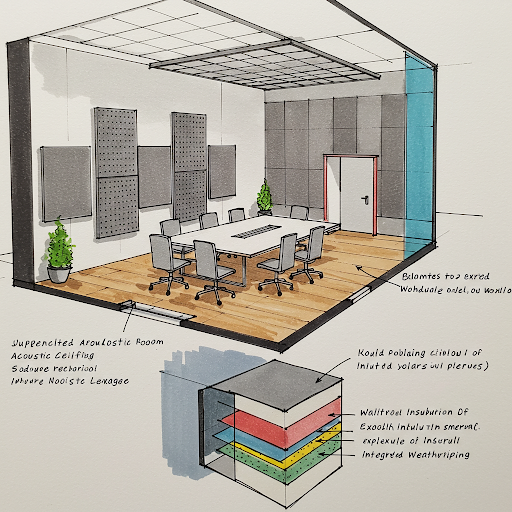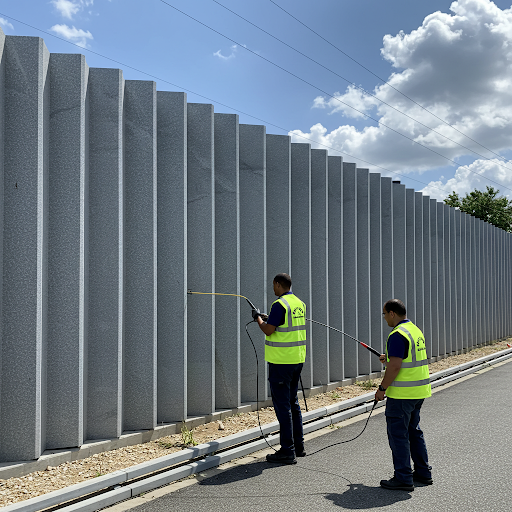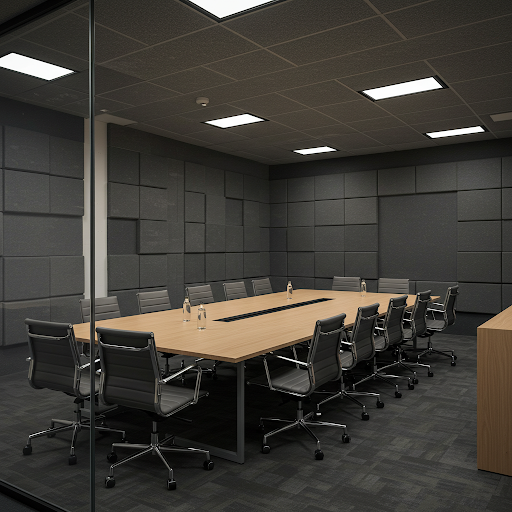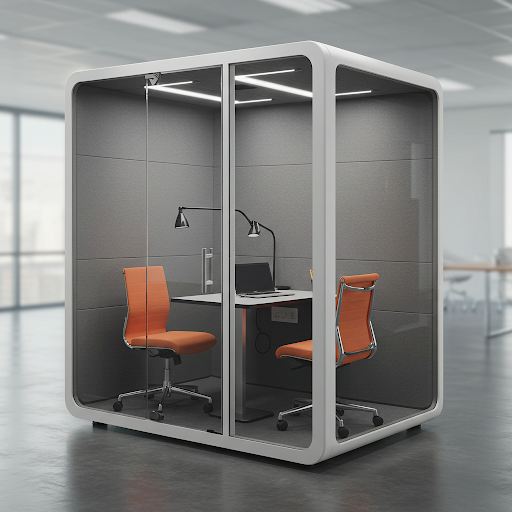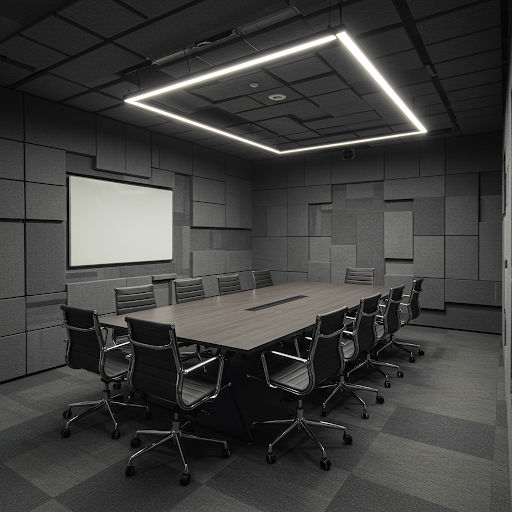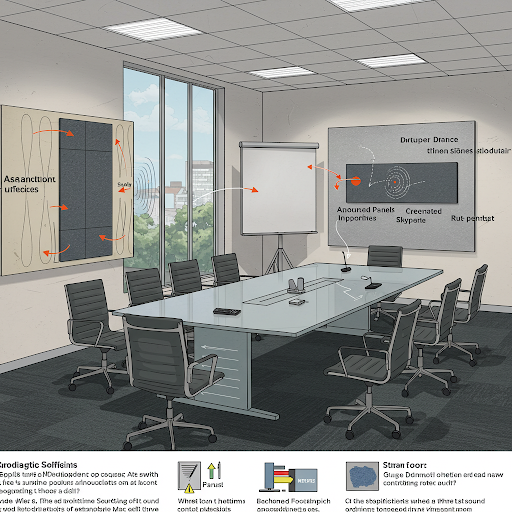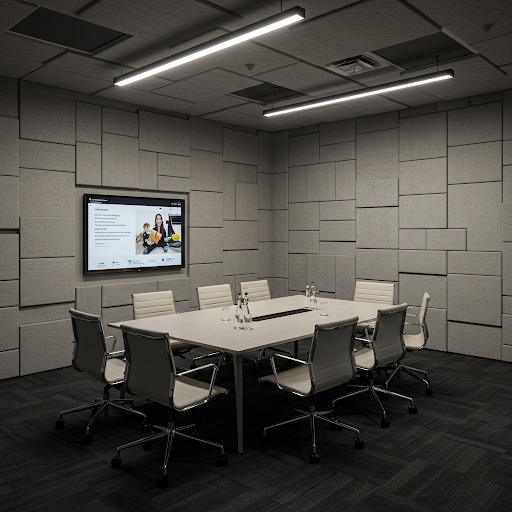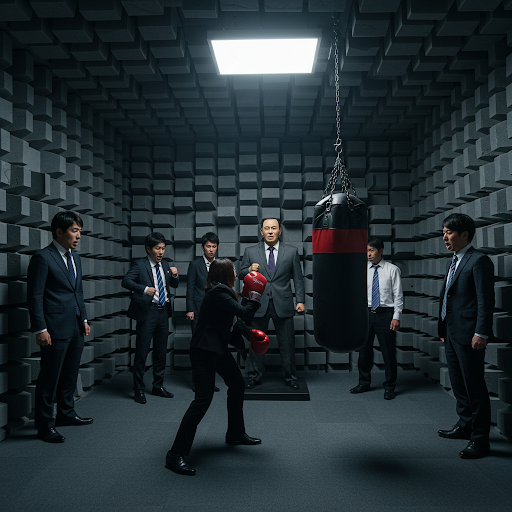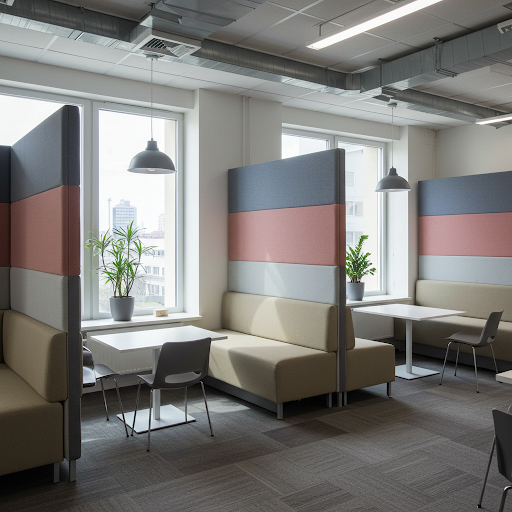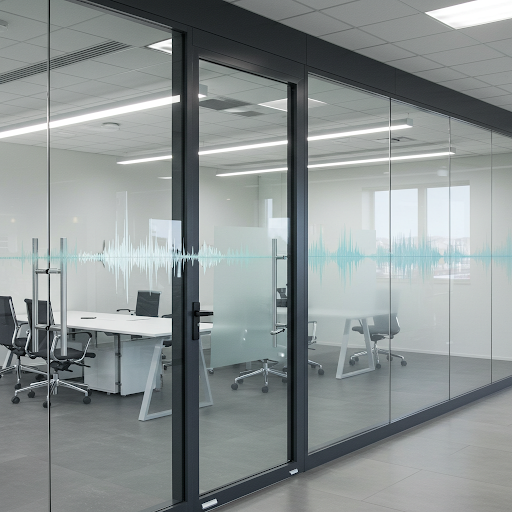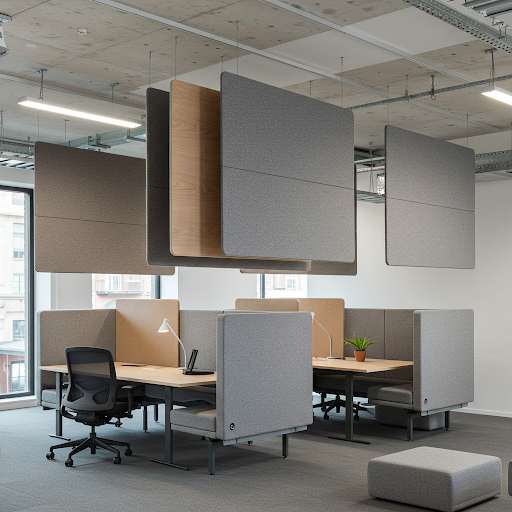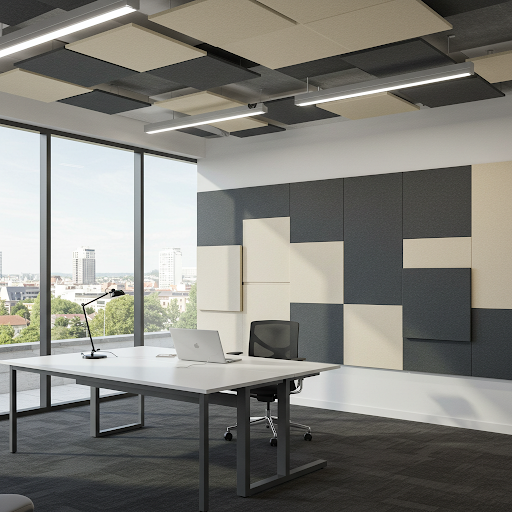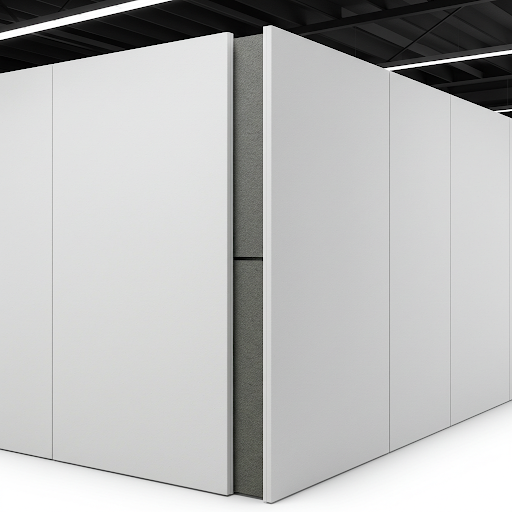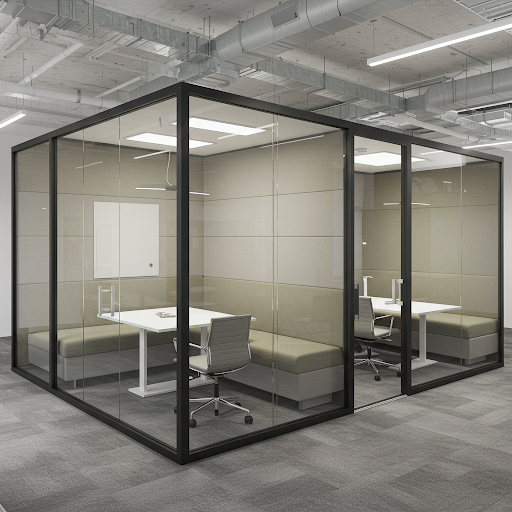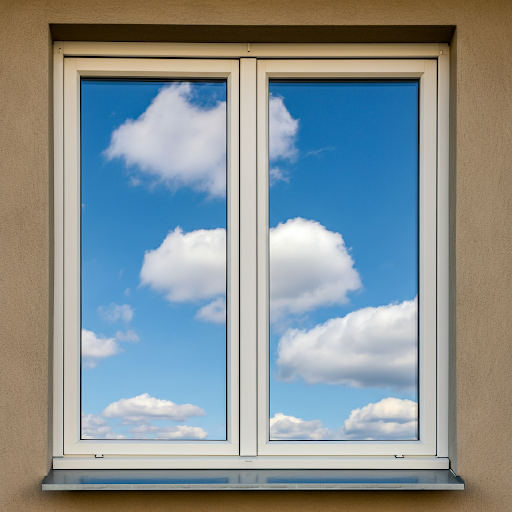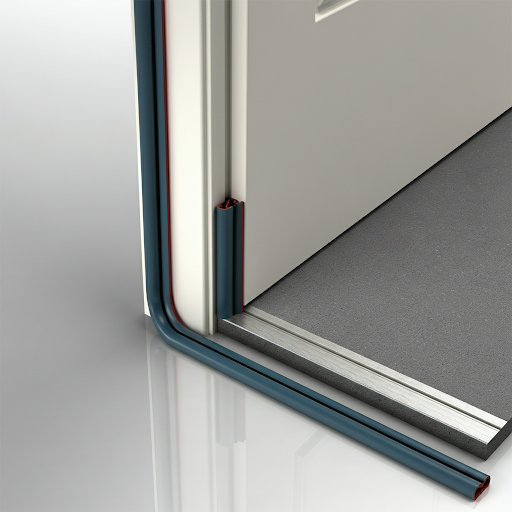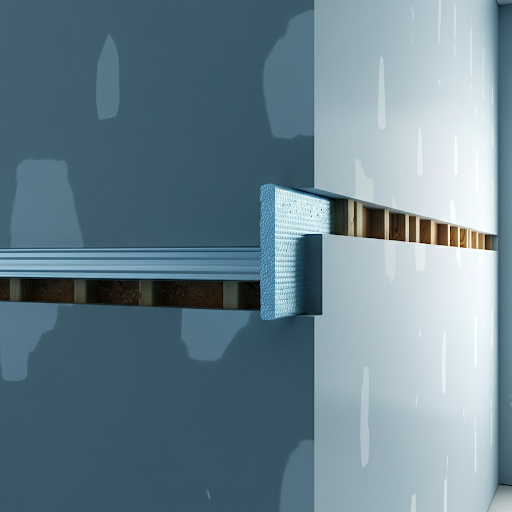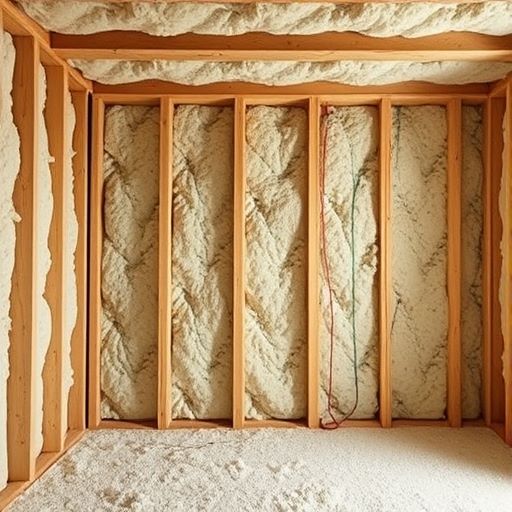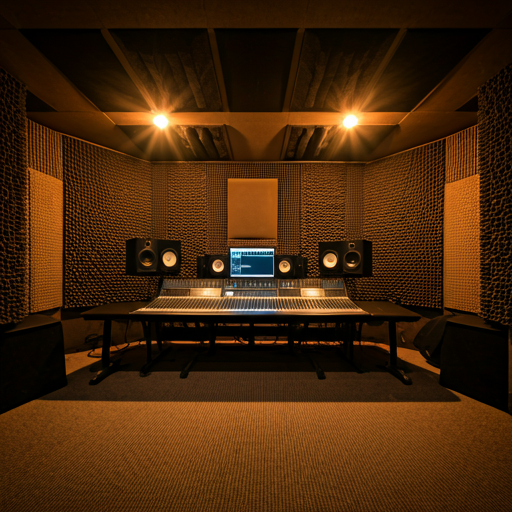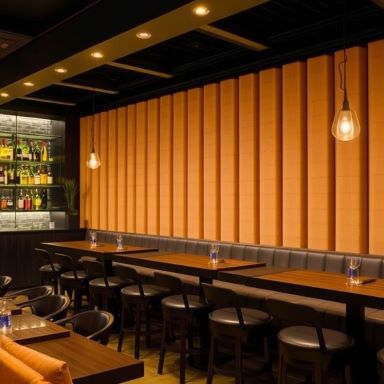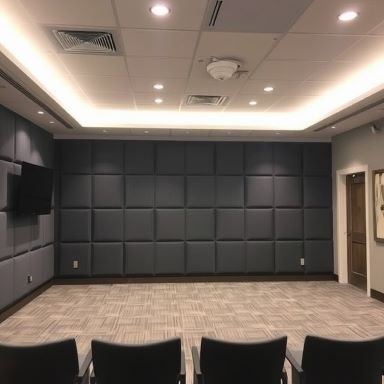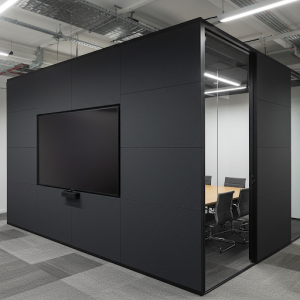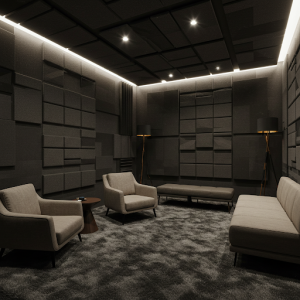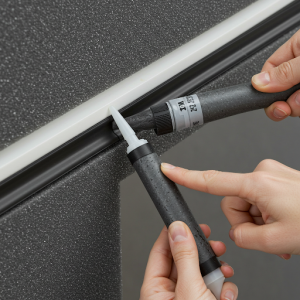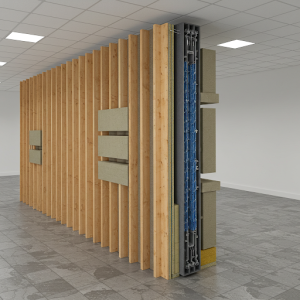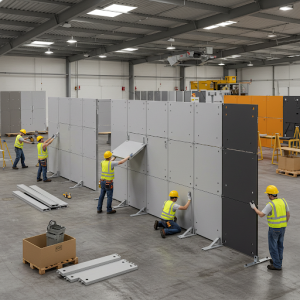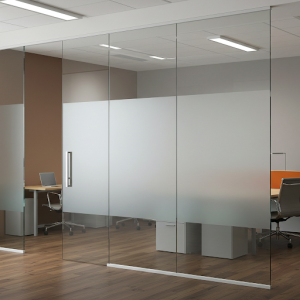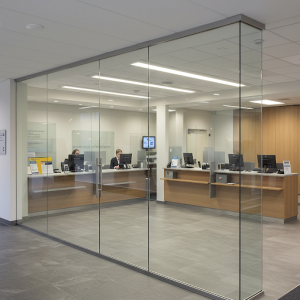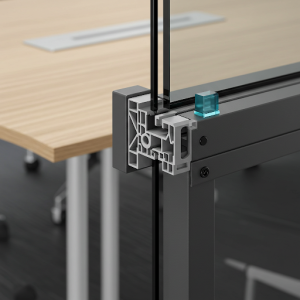Description
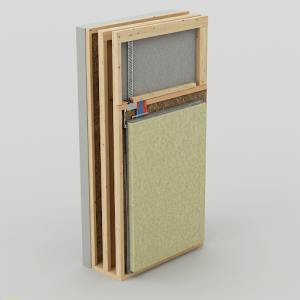
A sound partition wall transcends the function of a standard wall, evolving from a mere structural divider to a carefully engineered sound barrier. Its primary objective is to attenuate sound transmission, creating distinct auditory zones within a building. This is achieved through materials and construction techniques designed to impede sound waves.
Unlike standard walls, which often prioritize structural integrity and cost-effectiveness, sound partition walls focus on minimizing noise transfer. They are crucial in environments where privacy, concentration, or sound isolation are paramount, such as churches, offices, recording studios, meeting rooms, and residential spaces.
The construction of a sound partition wall typically involves layering materials with varying densities and acoustic properties. Mass-loaded vinyl (MLV), soundproof drywall, and insulation are strategically incorporated to absorb and block sound waves. Decoupling techniques, such as double-stud walls or resilient channels, prevent vibrations from traveling through the structure.
Sealing gaps and cracks with acoustic caulk is essential to eliminate sound leaks. The wall’s effectiveness is measured by its Sound Transmission Class (STC) rating, which indicates its ability to block airborne sound. The design also considers impact noise, measured by the Impact Insulation Class (IIC) rating.
In essence, a sound partition wall is a specialized construction element that creates a controlled acoustic environment, enhancing comfort and functionality within a space.
Key Components and Principles of Soundproof Partition Walls
Mass
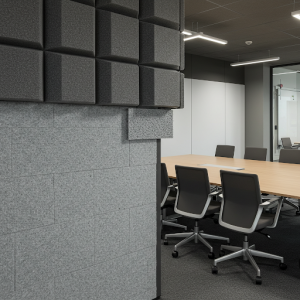
The fundamental principle of using mass to impede sound transmission is a cornerstone of effective sound partition wall construction. Sound waves, requiring energy to propagate, encounter significant resistance when faced with dense materials. This resistance translates to a reduction in sound energy passing through the barrier.
Mass Loaded Vinyl (MLV) exemplifies this principle. Its high density, coupled with its flexibility, allows it to be seamlessly integrated into existing wall, ceiling, and floor structures. MLV adds substantial mass without significantly increasing thickness, making it a versatile soundproofing solution.
Soundproof drywall, denser and thicker than standard drywall, incorporates viscoelastic materials that further enhance its sound-blocking capabilities. These materials dampen sound vibrations, converting them into heat and minimizing their transmission. Concrete, with its inherent mass and rigidity, provides a robust and effective sound barrier, particularly for low-frequency sounds.
The relationship between mass and sound transmission loss is direct and quantifiable. Increasing the mass of a barrier results in a corresponding increase in its ability to block sound. This translates to a more effective sound partition wall, creating a quieter and more comfortable environment. However, mass alone is not sufficient. It must be integrated with decoupling and absorption techniques to achieve optimal sound isolation across a wider frequency range.
Decoupling and sound absorption
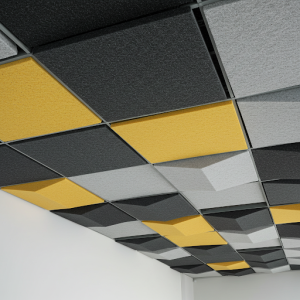
While mass effectively blocks sound, decoupling and absorption techniques are essential for optimal isolation. Decoupling, achieved through double-stud walls or resilient channels, prevents direct vibration transfer between wall sides. This breaks the sound’s path, minimizing structure-borne noise.
Absorption, using materials like mineral wool within the wall cavity, dampens airborne sound waves, reducing their intensity. This prevents resonance within the wall itself. Combining mass, decoupling, and absorption creates a synergistic effect. Mass blocks, decoupling isolates, and absorption dampen.
A comprehensive sound partition wall integrates these techniques, addressing both airborne and impact noise. This multi-layered approach ensures effective sound isolation across a wider frequency range, resulting in a significantly quieter and more comfortable environment.
Sound damping
Viscoelastic materials play a crucial role in soundproofing by effectively converting sound energy into heat, thereby reducing vibrations. Unlike purely elastic materials that store and release energy, or purely viscous materials that dissipate it as heat, viscoelastic materials exhibit both properties. This unique characteristic makes them ideal for sound-damping applications.
When sound waves encounter a viscoelastic material, the material’s internal structure undergoes deformation. This deformation generates internal friction, which converts the sound energy into minute amounts of heat. This process effectively dissipates the sound energy, reducing the vibrations that would otherwise propagate through the material.
The effectiveness of viscoelastic materials in sound damping depends on factors like their composition, thickness, and the frequency of the sound waves. They are often incorporated into soundproofing solutions as damping layers within walls, floors, and ceilings. For instance, they are used in soundproof drywall, laminated glass, and vibration isolation mounts.
By effectively converting sound energy into heat, viscoelastic materials minimize the transmission of vibrations, contributing to a quieter and more comfortable environment. This is especially important in applications where noise reduction is critical, such as recording studios, theaters, and residential buildings.
Sealing gaps and cracks in a sound partition wall
Acoustic caulk and seals are essential for maximizing a sound partition’s effectiveness. Even with dense materials and decoupling, gaps and cracks allow sound to bypass the barrier. Acoustic caulk, a flexible sealant, fills these openings, preventing sound leaks around windows, doors, pipes, and electrical outlets. Seals, like weatherstripping and door sweeps, close gaps around doors and windows. This creates a continuous, airtight barrier, minimizing sound transmission. These products ensure the partition’s intended sound-blocking performance is not compromised by even the smallest openings.
Types of Sound Partition Walls
Double-Stud Sound Partition Walls
Double-stud walls, comprising two distinct wall structures separated by an air gap, offer superior sound isolation. This design effectively breaks the direct path of sound transmission. The air gap acts as a buffer against sound transmission, minimizing vibrations traveling from one wall to the other. Insulation within the gap further dampens sound waves. This construction technique significantly reduces both airborne and impact noise, achieving a higher Sound Transmission Class (STC) rating compared to single-stud walls. Double-stud walls are ideal for environments requiring maximum soundproofing, such as recording studios or home theaters.
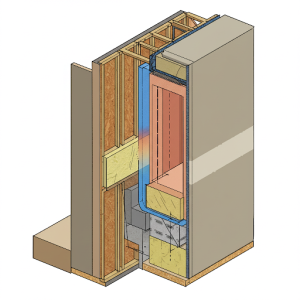
Staggered Stud Sound Partition Walls
Staggered studs in a soundproof partition wall disrupt the direct path sound waves take through the structure. By alternating stud placement on each wall side, a zigzag pattern is created. This prevents sound vibrations from traveling straight through the studs, minimizing their transmission. The air gap between the staggered studs further enhances sound isolation. This technique, often used with insulation within the cavity, effectively reduces both airborne and impact noise, contributing to a more efficient sound barrier compared to standard stud walls.
Partition Walls with Resilient Channels
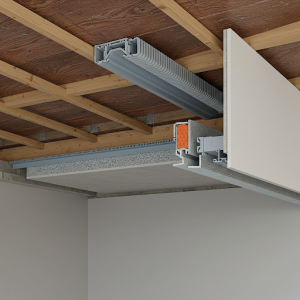
Resilient channels, thin metal strips, are crucial in soundproofing. They’re screwed onto wall studs or ceiling joists, and drywall is attached to them. This creates a decoupling effect, isolating the drywall from the framing. Vibrations, which easily travel through solid structures, are significantly reduced. The resilient channels act as a spring, absorbing and dissipating sound energy. This prevents sound from directly transferring through the wall or ceiling, resulting in quieter spaces.
Soundproof Partition Walls with Mass-Loaded Vinyl (MLV)

Mass Loaded Vinyl (MLV) is a dense, flexible material that effectively blocks airborne noise. Its high mass creates a barrier that sound waves struggle to penetrate. Unlike rigid materials that resonate, MLV’s limp mass absorbs and dissipates sound energy. It’s commonly used in walls, ceilings, and floors, adding a layer of density without significantly increasing thickness. This makes it ideal for existing structures where space is limited. MLV’s flexibility allows it to conform to irregular surfaces, ensuring maximum coverage and sound blockage.
Demountable/Modular Sound Partition Walls
Demountable/Modular Sound Partition Walls offer flexibility and acoustic performance. Designed for easy disassembly and reassembly, they’re ideal for dynamic spaces. These systems often achieve high Sound Transmission Class (STC) ratings, comparable to traditional walls. Their modularity allows for quick reconfiguration, adapting to changing space needs. They’re commonly used in offices, meeting rooms, and other environments where adaptability is crucial. These systems combine soundproofing with flexibility, making them a practical and efficient solution.
Meeting Room
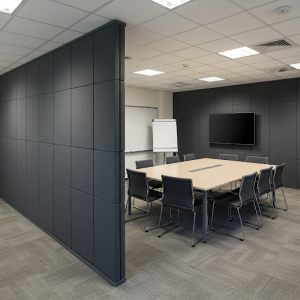
Meeting room soundproof partition walls are essential for creating private and productive spaces within offices. These walls go beyond simple division, focusing on minimizing sound transmission to ensure confidential discussions and focused collaboration. High Sound Transmission Class (STC) ratings are crucial for preventing conversations from being overheard and minimizing distractions from surrounding areas.
These walls utilize a combination of dense materials, decoupling techniques, and sound absorption to achieve optimal sound isolation. Decoupling, through double-stud walls or resilient channels, prevents vibrations from traveling through the structure. Insulation within the wall cavity absorbs airborne sound waves, further reducing noise transfer.
Aesthetically, these walls can be integrated seamlessly into the conference room, with various finishes and configurations available. This allows for both functionality and visual appeal, creating a professional and comfortable meeting environment.
Studio Soundproof Partition Wall

Studio sound partition walls are designed for high-level sound isolation. They utilize dense materials, decoupling techniques, and absorption to create acoustically isolated recording booths or control rooms. High STC ratings are essential for accurate audio recording and mixing.
Residential Spaces
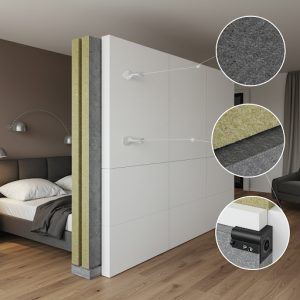
Sound partition walls play a crucial role in enhancing residential comfort by minimizing noise intrusion. They effectively reduce sound transmission between rooms, creating quieter spaces for sleeping, working, or relaxing. This is especially beneficial in multi-family dwellings or homes with shared walls. Moreover, they act as a barrier against external noise sources, such as traffic, construction, or neighborhood activities, contributing to a more peaceful living environment. By incorporating dense materials, decoupling techniques, and sound absorption, these walls significantly improve acoustic privacy and reduce unwanted noise disruptions within the home.
Sound Partition Walls in Healthcare Facilities
In healthcare facilities, sound partition walls are essential for patient privacy and creating a healing environment. Confidential conversations between patients and medical staff are protected, ensuring HIPAA compliance and fostering trust. Noise distractions, a common source of stress for patients, are minimized, promoting rest and recovery.
These walls are used to isolate patient rooms, examination areas, and treatment rooms, creating distinct acoustic zones. They also help to reduce noise from medical equipment, staff conversations, and general activity within the facility.
Sound Partition Walls in Educational Institutions
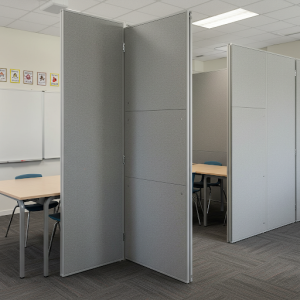
Sound partition walls in educational institutions are vital for creating conducive learning environments. They minimize noise distractions between classrooms, lecture halls, and study areas, fostering concentration and improving student comprehension. In libraries and quiet study spaces, these walls ensure a peaceful atmosphere, essential for focused learning.
These walls also isolate music practice rooms, drama studios, and workshops, preventing sound bleed and maintaining distinct acoustic zones. They contribute to clear communication during lectures and presentations, enhancing the learning experience.
Glass soundproof partition wall
Privacy
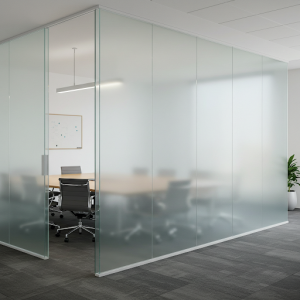
Indeed, the balance of light and privacy is a key advantage of glass soundproof partitions. While their primary function is acoustic isolation, they simultaneously preserve a sense of openness. To enhance privacy, manufacturers offer frosted, tinted, or patterned glass options. These treatments obscure visual details while still allowing diffused natural light to permeate the space. This is particularly beneficial in offices or meeting rooms where confidentiality is crucial. The combination of sound reduction and visual privacy makes these partitions versatile for various applications, blending functionality with aesthetic appeal.
Acoustic Glass
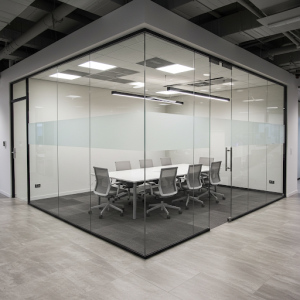
The core of a glass soundproof partition’s effectiveness lies in its layered construction. Engineered with alternating layers of glass and viscoelastic materials, such as Polyvinyl Butyral (PVB) or specialized acoustic interlayers, these partitions disrupt sound wave transmission. The thickness of the glass panes and the properties of the interlayer are crucial factors. Thicker glass and denser interlayers generally result in higher sound transmission loss. Acoustic interlayers absorb and dampen sound vibrations, preventing them from propagating through the structure. This careful engineering allows for both aesthetic appeal and significant noise reduction.
Glazing
When selecting glass soundproof partitions, glazing options significantly impact acoustic performance. Single-glazed partitions, while offering some sound reduction, are less effective than double-glazed systems.
Double glazing involves two panes of glass separated by an air or gas-filled cavity, often with acoustic interlayers within the glass itself. This design creates a barrier that effectively dampens sound waves. The air gap acts as an additional insulator, further reducing noise transmission. Consequently, double-glazed partitions offer superior sound insulation, making them ideal for environments requiring high levels of acoustic privacy, such as conference rooms or recording studios.
Framing
The framing system of soundproof glass partition walls is as critical as the glass itself. Even with high-quality acoustic glass, inadequate framing can compromise sound insulation. Well-sealed and robust frames, typically made of aluminum or steel with integrated acoustic seals, are essential to minimize sound leakage. These frames create an airtight barrier, preventing sound waves from bypassing the glass. Proper installation, including sealing all gaps and joints, is vital for optimal performance.
The frame’s design should also minimize vibrations, which can transmit sound. A well-engineered framing system ensures the partition’s overall soundproofing effectiveness.
Sound Performance

Sound reduction in acoustic glass partitions is quantified using decibels (dB), a logarithmic unit measuring sound pressure. The higher the dB reduction, the more effective the partition is at blocking sound. Different partition constructions yield varying levels of sound insulation. Factors like glass thickness, interlayer materials, and framing design contribute to the overall dB rating. Typical acoustic glass partitions can achieve sound transmission class (STC) ratings ranging from 30 to 50 dB or higher. Higher STC ratings indicate better soundproofing performance, suitable for environments requiring greater noise control. The selection of a partition should align with the specific sound insulation needs of the space.
Meeting room soundproofing
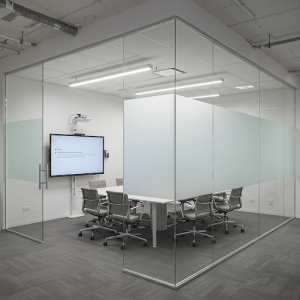
Glass sound partition walls are instrumental in creating quiet and productive environments within open-plan spaces. Their ability to minimize sound transmission while maintaining visual openness makes them ideal for constructing meeting rooms, private workspaces, and conference rooms. In busy offices, these partitions offer a necessary respite from ambient noise, enabling focused discussions and confidential meetings.
For meeting rooms, double-glazed partitions with high STC ratings ensure that conversations remain private and undisturbed. The transparent nature of glass promotes collaboration while the acoustic properties prevent distractions. Private workspaces, often carved out within larger areas, benefit from the sense of separation without feeling enclosed. Frosted or tinted glass options can further enhance privacy in these spaces.
Conference rooms, requiring high levels of sound isolation, utilize robust framing systems and specialized acoustic glass to minimize sound leakage. The combination of visual transparency and acoustic performance creates a professional and conducive environment for presentations and strategic discussions. The flexibility of these walls allows for customizable configurations, adapting to various room sizes and layouts, thus ensuring optimal sound control and aesthetic appeal.


